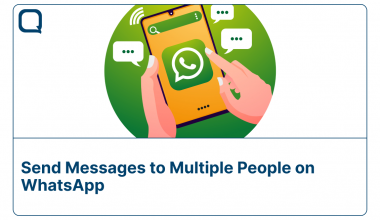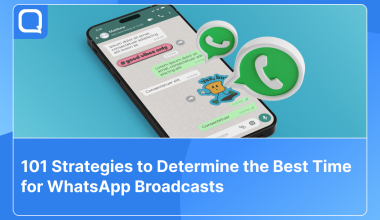It is undeniable that Indonesians are extremely dependent on messaging apps in recent years. As discovered by Statista, a portal for market research and data, the rate of mobile messaging app’s penetration in Indonesia will continue to rise from 2015 to 2020. In 2016, it was discovered that around 64.1% people in Indonesia use mobile messaging apps to communicate, and by the end of 2020 this number is projected to grow up to 73.8% or maybe even more.
Moreover, according to Forrester, 63% of consumers are satisfied with chatbots in mobile messaging apps, as long as they have the option to switch the conversation to a human agent if needed. Naturally, customers expect to have a more integrated and seamless experience than traditional phone calls and SMS with businesses via messaging, regardless of the platform. For example, when customers are redirected to another customer service (CS) agent, they want their conversation with the previous agent (be it human or bot) to be recorded and the interaction continued without repeating the enquiry all over again.
Based on Qiscus’ internal research, chatting becomes vital in the current business climate, especially for millennials who make up almost half of the market as they spend most of their time on their mobile phones chatting. Moreover, a research conducted by Forrester Consulting found that companies which implement chat in their processes have their potential Return of Investment (ROI) increase by up to 305% due to engagement and effectiveness improvement through automated chatting systems.
Breaking the Myths of Building Customized Messaging Apps
The increasing number of demands towards chatting makes it necessary for companies to implement chat into their system. Some have even began to make their own chatting platform as a supplementary feature of their core product, such as GoJek, which implemented chat into their app after years of operation. However, with all the sweet things chat feature can offer us, there are some myths and facts that you may have heard of. Let’s take a look at these as part of your considerations in thinking about producing your own chat app:
1) Since there are existing mainstream chat apps out there, creating one for my company would be easy
As messaging apps spoil users with countless advanced features, this ultimately influences the customers’ expectations. They will anticipate any new messaging app to be able to perform exactly like other messaging apps. However, the truth is more hideous than what end-users (possibly some companies, too) expect to be. Building a messaging platform like the mainstream apps takes years of trial and error, and it is far from easy to build an app from scratch.
To build a brand new real-time messaging app, not only do we need a robust understanding of real-time systems, we also require fault-tolerant and distributed systems. More than that, we have to design an efficient infrastructure to power up a chat feature into the equation, and we still haven’t talked about high-end features such as typing indicators, online-offline status, rich media support for pictures, videos and audio-based messages yet.
However, it is not nearly impossible. One of the easiest ways is by using ready-to-use Chat SDK to facilitate the development. It is similar to baking a cake with pre-prepared ingredients in a single package. All we need is to mix them together with added features from our own recipe, bake it, and voila; a brand new messaging app of our own is ready to use.
2) It will only take a couple of months of effort before my app is ready to be launched
Sadly, no. It’s more than that. At the very least, you will need six months to build an entire simple messaging apps. Moreover, it was reported that the Whatsapp team spends most of their time debugging. The bulk of their time is mostly spent to get rid of pesky bugs, with over 50 engineers hired only to have debugging as their main job.
3) The performance of my app should be the same as WhatsApp
Another thing worth mentioning is that the majority of businesses (also end-users) expect to have their own messaging apps to perform at the level that Whatsapp is performing at. What people tend to overlook is the fact that WhatsApp’s level of performance is not the minimum, by any means.
WhatsApp, as the most used messaging apps in the whole world, with a whopping 1.5 billion active users, provide end-users with seamless and unique chat features. Highly exposed to WhatsApp’s flagship “Online” and “Typing” statuses for instance, end-users may find it as part of their expectation. However, not all engineers are capable of that feat.
Moreover, when it comes to performance, many factors should be considered, from the environment in which the application is being deployed to the features made available in the app itself. Different factors will result in different kinds of apps. It is almost impossible to compare apples to apples, even though the user interface may be 100% the same. For example, the chat feature in the Gojek app might be similar to WhatsApp, but it is completely different, as the chat feature in Gojek App is supplementary compared to Whatsapp that treated chat as their core service.
4) Building a new app is cheaper and easier to maintain than paying for my hosting in a vendor’s cloud
If companies choose to develop their own messaging app because of cost-saving considerations, then it can’t be more wrong. It is definitely more expensive than going for cloud hosting. For a medium development price, it will cost your company around $45000-$55000 for a simple app. On the other hand, for WhatsApp-like messaging app, the cost will rise from $55000-$150000 and will require about four to six months of building time. This does not include maintenance cost. However, if there are other more important considerations than the cost, such as data security and ownership, then building your own native messaging app will not be in vain.
5) Since people are familiar with WhatsApp, they would easily switch to my own messenger apps
Some companies might think that since people are familiar with Whatsapp, given its sheer number of user base, it will automatically reduce the learning curve of targeted end-users. The premise is that people are already literate with Whatsapp, companies assume it will be easier for end-users to use their new app, especially if their new developed messaging app is similar to WhatsApp. The end result projected is that they will instantly choose our native app rather than the already existing one. However, to drive those high number of loyal users to switch to your app requires more than meets the eye, not only the interface, but also the equipment capability, server strength, unique features, and many others.
Building our own messaging app takes more than what is conventionally believed or understood. There are some more important considerations other than the five myths we have discussed above. If you would like to know more about building a messaging app and what you should really consider in doing so, drop us a note at www.qiscus.com or you can read our white paper and see what we can offer you.







